If you’ve never been to Sichuan, I’m sure you’ve heard of it. The famous hotpot and Kung Pao Chicken, the numbing Sichuan peppercorns, the adorable pandas and their favorite bamboo—these are all treasures of this abundant basin in China.
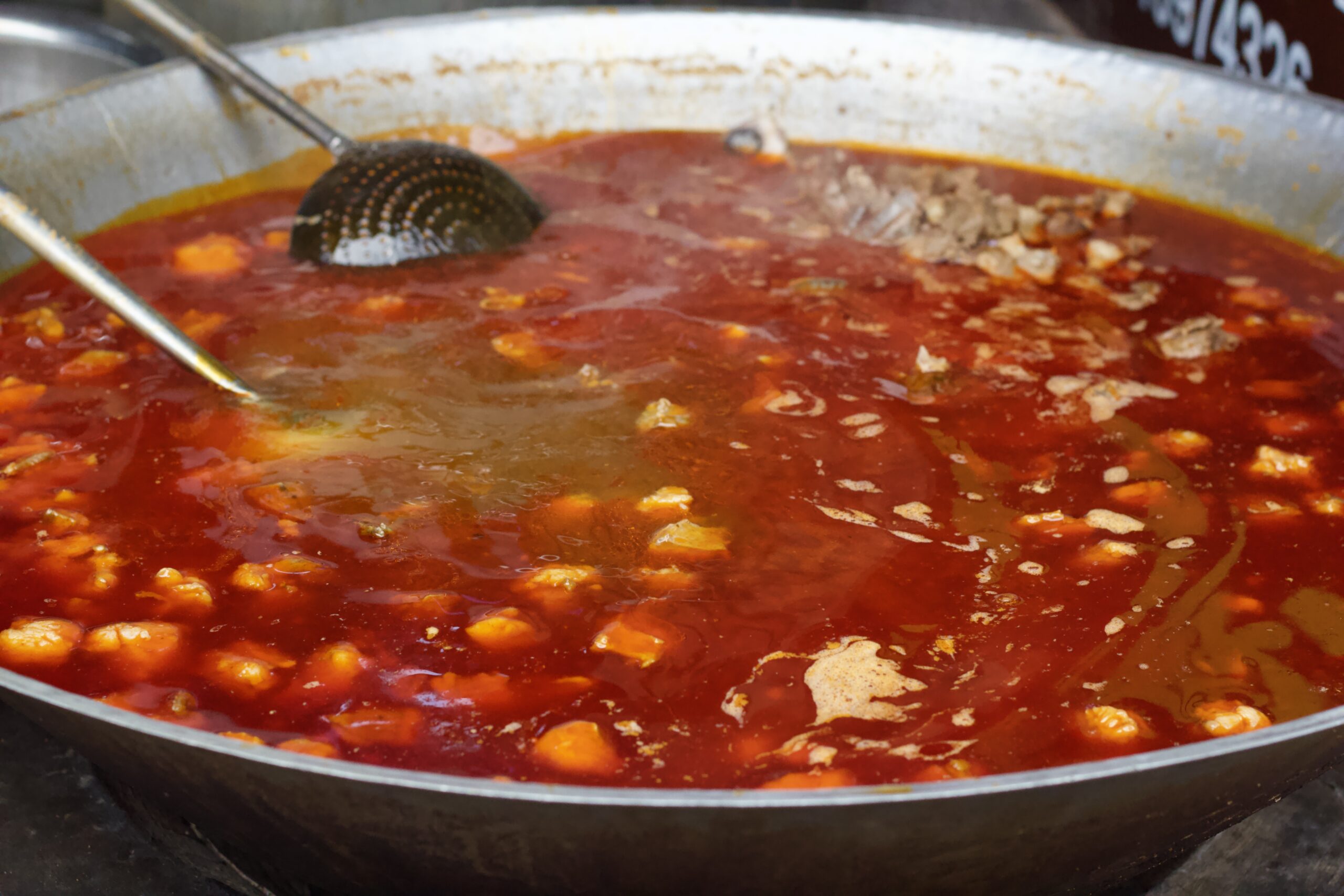
(Braised lamb in red soup with fermented chilis and ginger)
How we got here?
With over 2,300 years of civilization, the Sichuan Basin has witnessed the growth of humanity. Through the ebbs and flows of Chinese history, dynasties have come and gone, but culture has remained and settled. A small chili pepper made its way from South America to Sichuan via the Silk Road in the 18th century. When it first entered Guangdong by sea, people treated it as a decorative flower, not realizing how much it would influence Chinese cuisine.
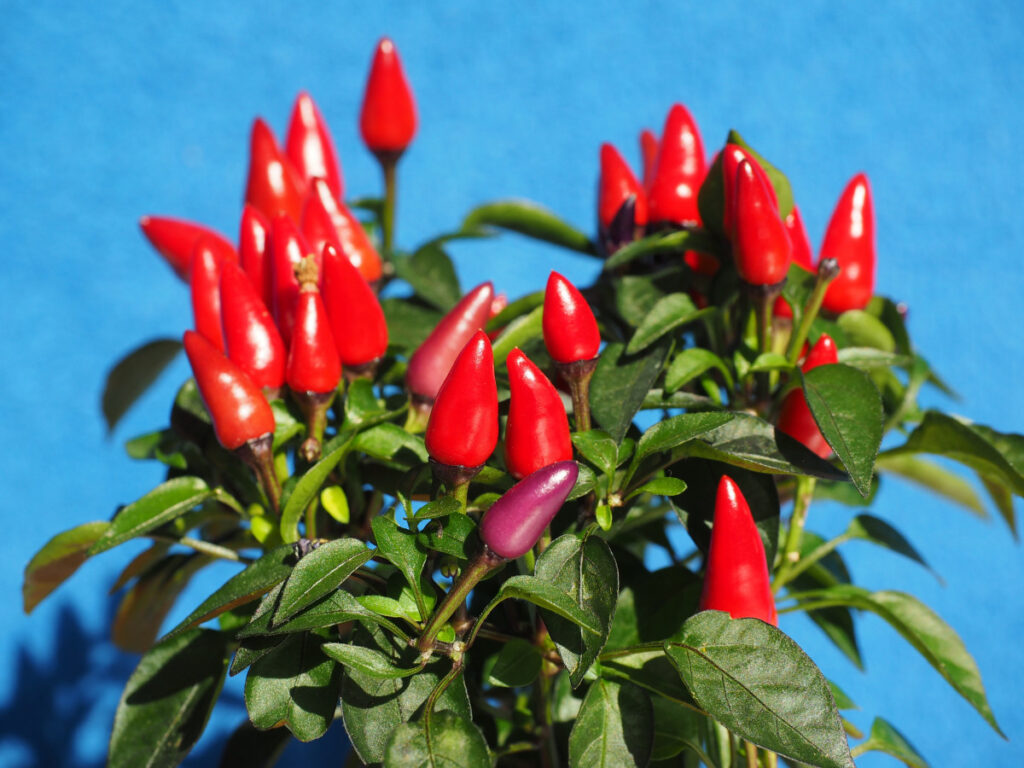
(Decorative chili plant, credit: pxhere.com)
When it finally reached the Sichuan Basin, people were amazed by its bright color and unique shape—but they still didn’t know what to do with it. Then, one cold night, when people were starving with no vegetables or salt, someone suggested trying it. Instant warmth filled their bodies, and the long, loving relationship between the Sichuan people and this “Ocean Pepper” (so named because it came from overseas by sea) began.
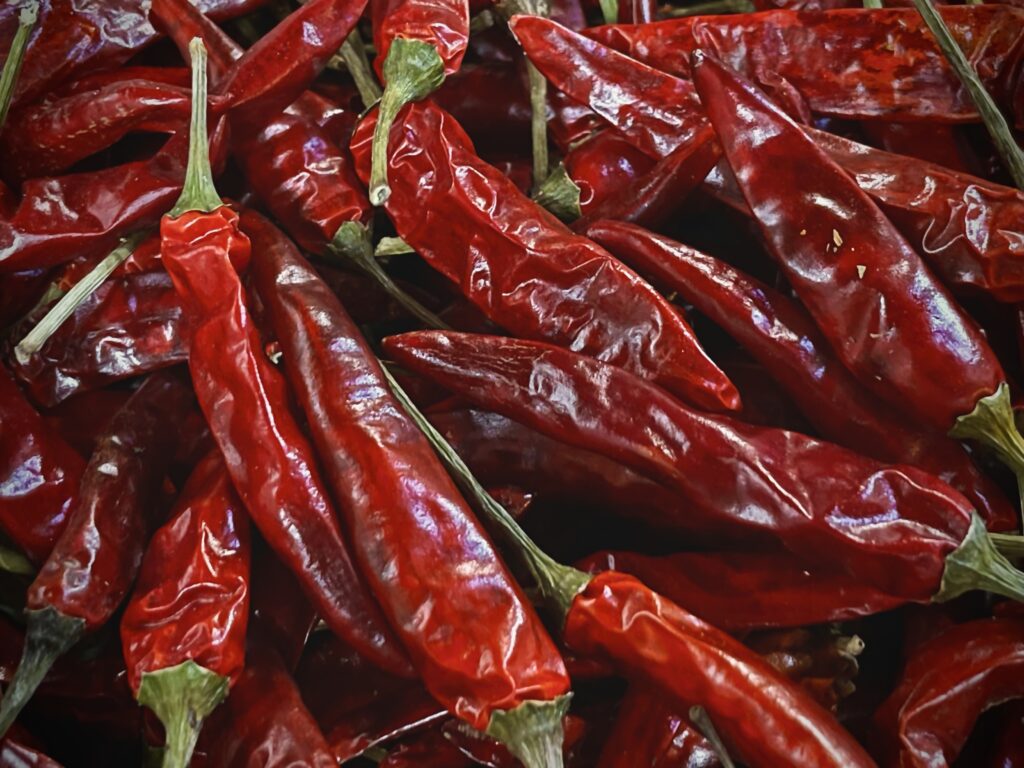
(Dried chili peppers or Haijiao (Ocean Pepper) for Sichuanese)
The Power of Flavors
Nowadays, when you visit a spice market, there are so many types of chili peppers that only the shop owner can tell you all the differences. Some seasoned chefs might be able to describe one or two varieties, but only the proud owner can give you the full story of each pepper’s origin and how best to use it. Sometimes, it’s quite amusing to watch a chef arguing with a shop owner about the “legit” way to make chili oil. I take mental notes of both their methods, and when I’m back in my small kitchen in Shanghai, I plan to try them out myself to see which one suits me. Next time there’s an argument, I’ll make sure to spice it up with my own insights!
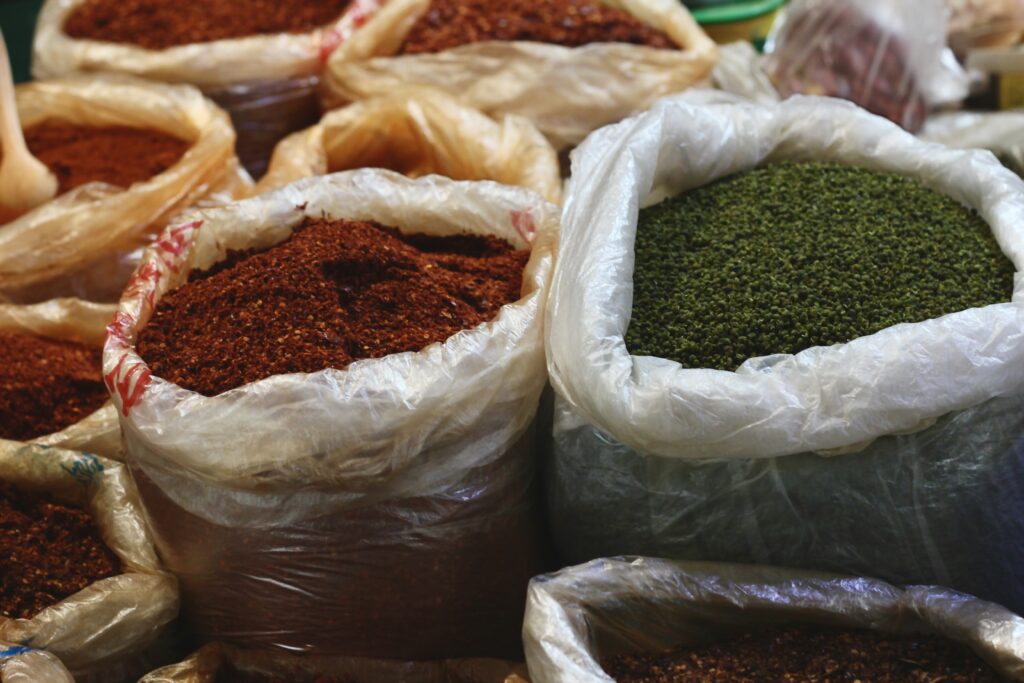
(Different varieties of chili peppers at a spice shop in Luzhou)
Just like pandas chasing bamboo and settling in the Sichuan Basin, millions of people visit Sichuan each year to satisfy their appetites. Thanks to the wide variety of seasonings used, everyone can find something they love. The complexity of flavors and the harmony they achieve have made Sichuan cuisine irresistible.
You might be deterred by the deep red color you see in hotpot or noodles, but please believe me when I say that spiciness is not the defining characteristic of Sichuan food. Once you move past the mental block of eating spicy food, you’ll begin to appreciate the complexity of flavors. Beyond the heat, you’ll taste the aroma of Sichuan peppercorns and countless other spices, the sourness of vinegar and pickled vegetables, the sweet and savory notes of soy sauce, and the smooth richness of oil that brings it all together.
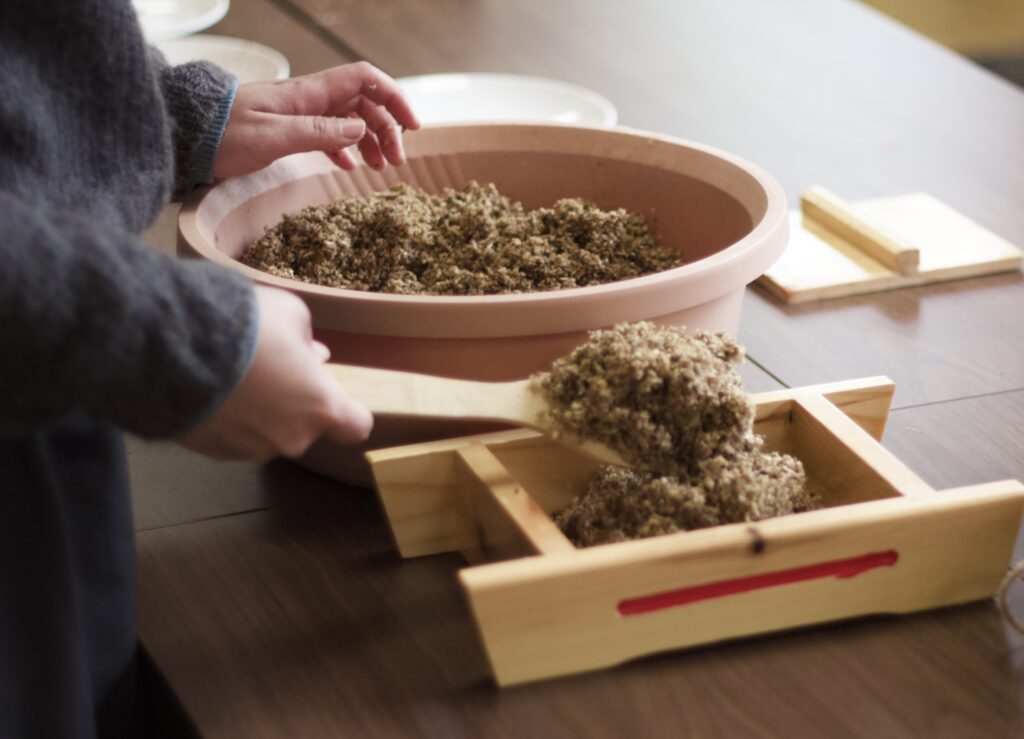
(Mixing different Chinese herbs to make Qu (Starter) for vinegar, part of our Fermentation Experience)
Before I dig into a bowl of noodles or a stir-fry in a Sichuan restaurant, it’s often hard to predict exactly how it will taste—each chef uses different seasonings, spices, and proportions. While there’s a general guideline for how a dish should taste, a pinch of sugar or a splash of finishing vinegar can transport you to another realm of flavor.
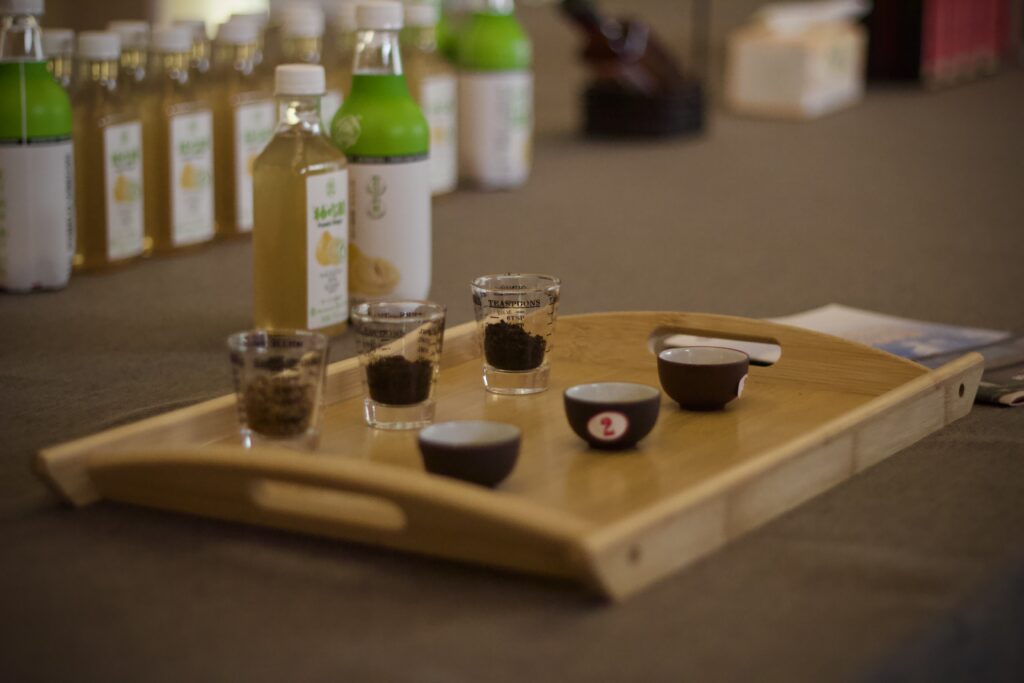
(Vinegar tasting and comparison, part of our Fermentation Experience)
Sichuan Soil, Sichuan Flavor, Sichuan People
It’s this spontaneous and relaxed approach that makes both Sichuan food and its people stand out. Take Chef Tang, for example—the young and talented chef who leads MountRiver Restaurant through the seasons, always surprising guests with creative dishes inspired by childhood memories of Luzhou.
He always appears serious when you first meet him—no smile, few words. When we walk through food markets, he’ll sometimes slip into a shop without saying a word or get so engrossed in an ingredient debate with a shop owner that he ignores our questions. At first, we all thought he was a very distant person.
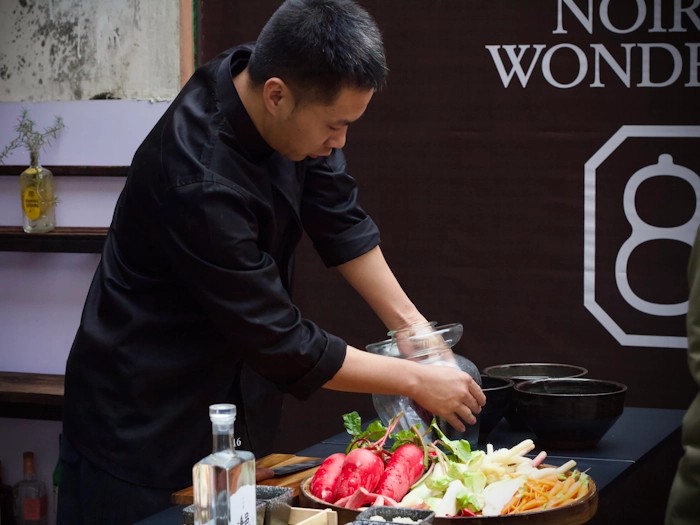
(Chef Tang demonstration on how to make Sichuan pickles, part of our Fermentation Experience)
Then everything changed when we stopped at a random stall selling Huangba—a fermented rice cake wrapped in fragrant leaves. He quickly approached us and said it was from his hometown, and that he knew the best way to cook it. He then suggested we go back to his hometown, Yaoba Historic Town, to get the most authentic Huangba. So, we continued our journey to Yaoba, thinking he would take us to a familiar shop.
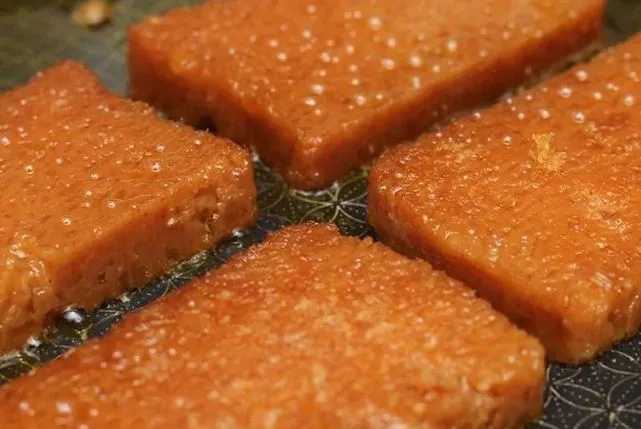
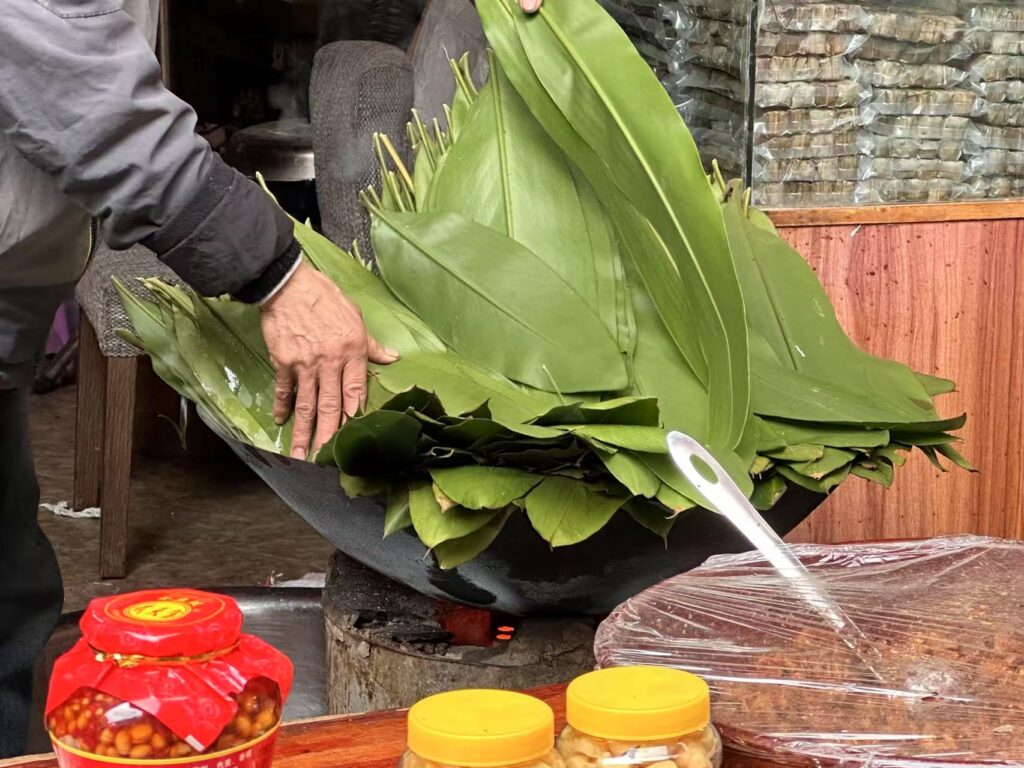
(Top: Huangba cut into squares, credit: Tencent; Bottom: Leaves that wrap the rice, Liangjiang)
He did take us to many shops he recommended—but not one that sold Huangba. As we reached the end of the shopping area, he popped out of nowhere and told us we had to go somewhere else.
“Where are we going?”
“To eat the authentic Huangba, of course!”
He drove us down a small off-road path and up a hill to a much more spacious area. A small brick house appeared, with an old lady waiting by the door.
The serious look on his face was gone. Smiling gently, he said, “This is my waipo (maternal grandma). She makes the best Huangba.”
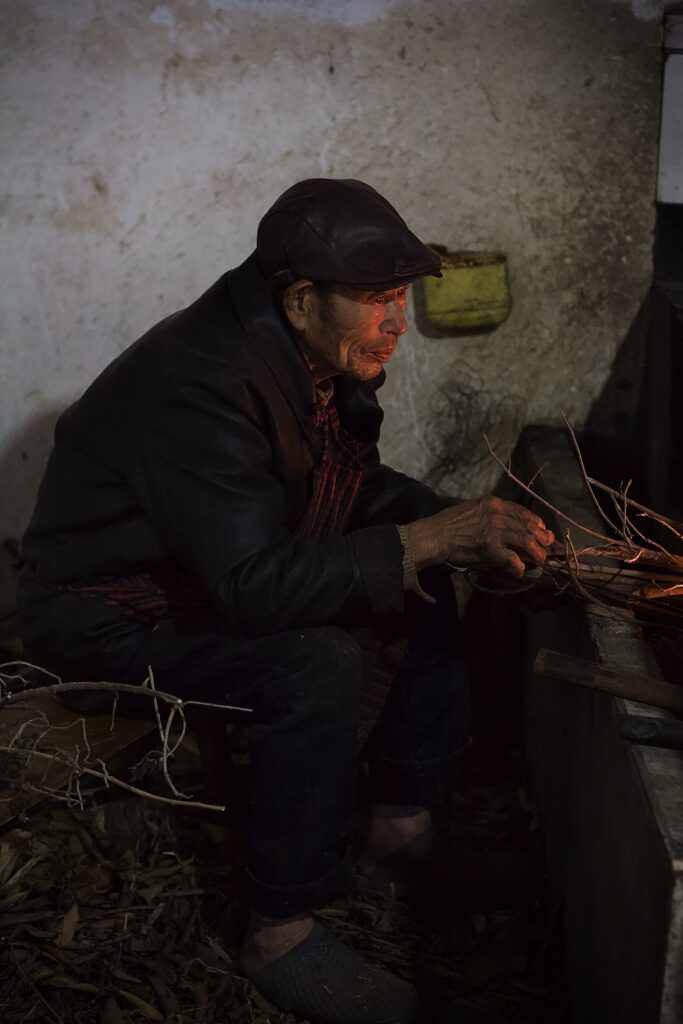
(Chef Tang’s grandpa at their hometown in Yaoba)
I can’t fully describe the significance of what he did—it broke his character in so many ways. From someone who rarely spoke about himself, he brought a group of strangers to his hometown to meet his grandparents, who still cook with wood fire in a humble countryside home. The ceiling was tall; we stood and watched his grandpa feed wood and branches into the fire pit to heat the wok.
His grandma cut the Huangba she made into small squares, and he seared them with oil. Even though he’s an accomplished chef working in a modern, high-end kitchen, cooking in this rural home felt completely natural to him. I asked him if he makes this for his daughter. The look on his face instantly changed—he smiled lovingly and proudly, “Of course, my daughter loves it.”
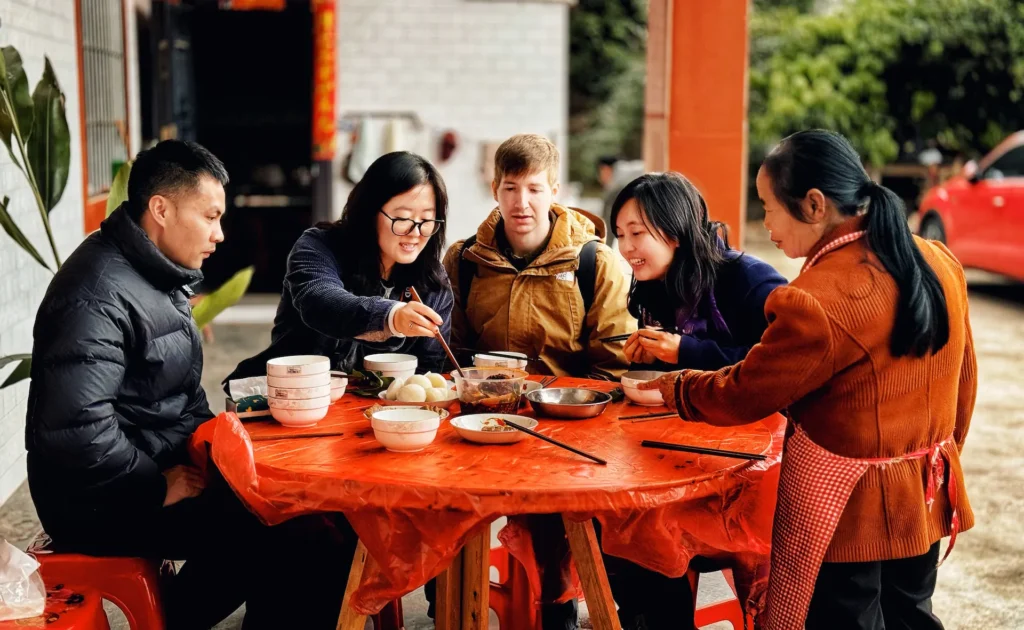
(Huangba tasting with Chef Tang on the left, as well as his grandma on the right)
From a little boy who was fed by his grandparents in a small town in Sichuan, to a teenager who stumbled into the culinary world because he didn’t want to do woodwork for a living, and then to a passionate chef who’s always curious to learn and experiment—moments like this make him who he is. At its core, food is a continuation of family connection and love.

Join us in our Fermentation Experience in Sichuan, explore flavors of more than a hundred types and meet chefs that are quietly but steadily changing the world.
